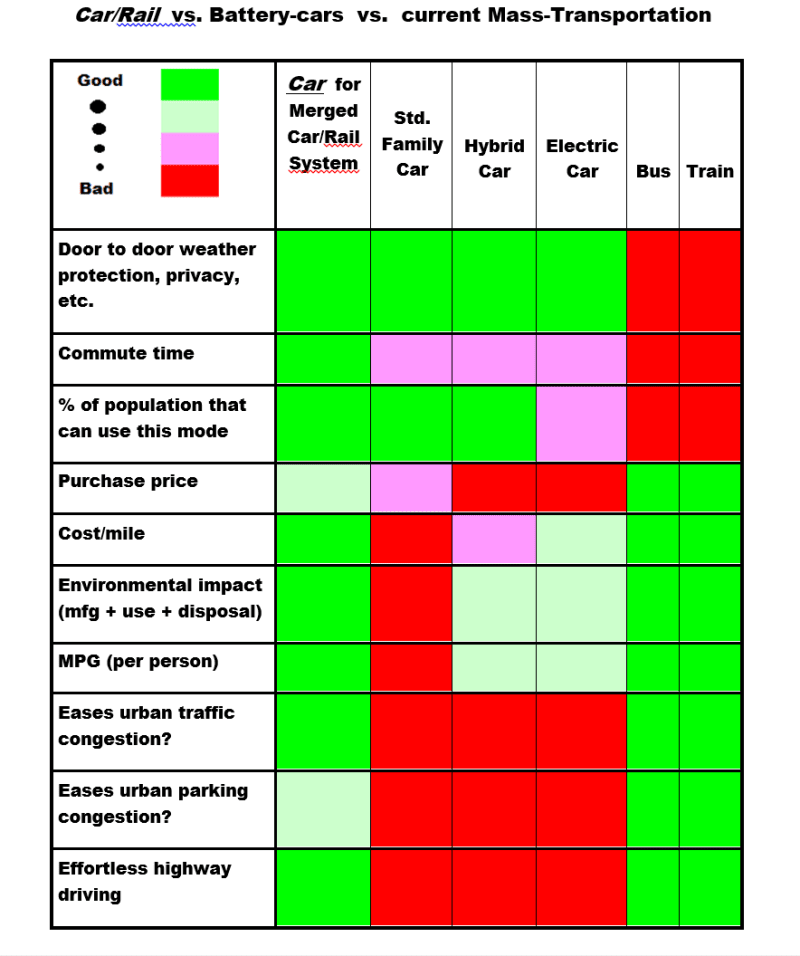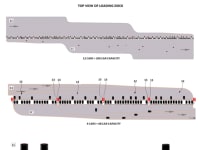Cars have always played a major part in our dreams. Unfortunately, as traffic became gridlocked, driving a car in urban areas became a nightmare. What’s more, cars and oil have practically bankrupted us to the tune of tens of trillions of dollars and have brought upon us wars and global warming. Now car companies are starting to offer expensive battery powered cars.
It is obvious that standard size “battery-cars,” whether hybrids or pure electrics, do not ease the gridlock and do too little to avert global warming since electrical energy is primarily derived from fossil fuels.
THE MERGED CAR/RAIL SYSTEM
The Car part of the system can be a battery-car (which, as a part of this system, makes sense) or even a ICE car. It can be used as a car around town or it can even be driven cross-country if need be. It weighs one ton, seats four and is 5½ feet wide and 10½ feet long (e.g., a "stretched" smart Car), however since its wheelbase is made to fit onto the Railcar it can piggyback wherever the System is or becomes, available. That is, in a nutshell, the crux of the System.
The Railcar part of the System is a flat-bed railcar fitted with ramps to load/unload/secure the Cars. And the Rails, at least initially, can be the existing rail lines leading into the city.
In Phase 2 (after the System proved itself) - the piggybacked Car would automatically connect to the train’s electric power to run HVAC and other accessories and top-off its own battery.
Phase 3 - will see additional Rails being laid on median strips (or elevated) and automated hubs for efficiently making inter-city connections.
Phase 4 – Short to medium air travel will be gradually replaced with quicker, less expensive, much safer and less vulnerable, less polluting, quieter and much more convenient Car/Rail System.
While being piggybacked the Car will leapfrog past congested roads which will also defuse the concern that we have of driving a small car among larger vehicles.
Conclusion
To curb global warming (and avoid future stranglehold of oil exporters) all we have to do is:
(i) use small cars for local driving and (ii) seamlessly merge these cars with rails to bypass congested urban roads and travel long distances in utmost comfort. Such a system could readily be adapted by China and India without which global warming cannot be abated.
So, if commuting from your door step into your job in the city, or to another city, meant a short Car drive to a loading dock, a leisurely and safe piggyback ride into the city and a short Car drive to your final destination wouldn’t you welcome the change?
--------------
Enclosed Fig 1 is self explanatory. Fig 2 is a loading dock overview. Fig 3 is self explanatory.
Video
Like this entry?
-
About the Entrant
- Name:Samuel Shiber
- Type of entry:individual
- Patent status:none








